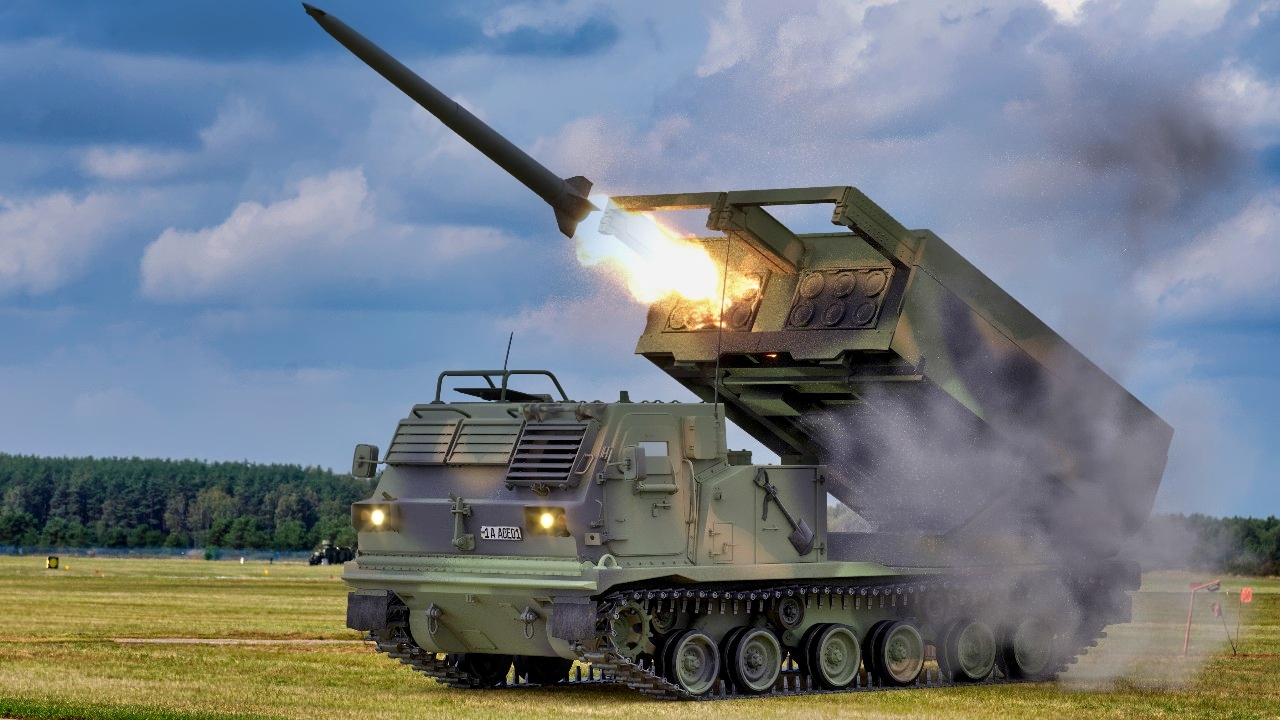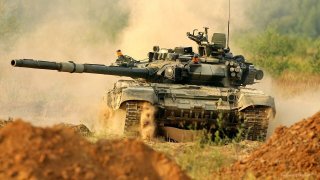Don’t Underestimate the Russian Military After the Ukraine War
When adjusted for comparison against the exemplar of U.S. military performance, accurate identification of Russia’s goals and of Russia’s opponent on the battlefield, the possibility emerges that the Russian military, now experienced and practiced against the most advanced NATO weaponry, may emerge from the war in Ukraine, when it finally ends, as a potent, modern military force.
The poor grade given to the Russian Armed Forces in their invasion of Ukraine and the poor prognosis for future Russian operations are largely based on two questionable assumptions.

The Russian Armed Forces made many mistakes and suffered many casualties at the beginning of the war, but they creatively adapted and pursued a more effective battlefield strategy.
There is a Chinese military proverb that even a mighty dragon cannot defeat a snake on its territory. When evaluating the Russian military performance in Ukraine, comparing it to the American exemplar is instructive. The United States has consistently failed to defeat armies more ragtag than the modern, well-equipped, and well-trained Ukrainian army. U.S. president Joe Biden has boasted of having “the most powerful military in the world,” but that military has failed to achieve its military and political objectives in Afghanistan, Iraq, and Libya.
The failing grade given to the Russian military’s ability to achieve its objectives is partly based on a probable misidentification of Russia’s military objective. Russia is being graded on its ability to conquer all of Ukraine and eliminate it as a sovereign nation.
But it is not at all clear that that was Russia’s goal. Before Ukraine walked away from the peace deal being negotiated in Istanbul, Russia committed only 120,000 to 190,000 troops to the invasion, which was an insufficient force to match a goal of total conquest. But if the goal was to force Ukraine to negotiate an agreement not to join NATO, after the United States refused to give that guarantee in December 2021, then the size of the Russian force may have been sufficient to accomplish its goal, and it nearly did.
Russian president Vladimir Putin has consistently said that, “this conflict is not about territory…[it] is about the principles underlying the new international order.” He has repeatedly said that, although Russian troops in 2022 “approached Kyiv … there was no political decision to storm the three-million city.”
Rather, he says, “it was nothing more than an operation to force the Ukrainian regime to peace. The troops were there to push the Ukrainian side to negotiations.”
This worked. Within weeks, Ukraine had agreed in Istanbul to abandon its NATO ambitions, Russia had withdrawn its troops from around Kyiv, and peace appeared possible before the West intervened and discouraged it.
The second misidentification behind Russia’s failing grade is the identification of its opponent on the battlefield. Russia’s accomplishments are meek if their foe on the battlefield is the Ukrainian Armed Forces. But their foe is not an unassisted Ukrainian army. It is a de facto member of NATO.
The United States and its Western partners have contributed the money, the weapons, the training, the intelligence, the strategies and war games, and the targeting information. The Ukrainians have provided the men to pull the triggers and do the dying. That is not to take anything away from the Ukrainian Armed Forces who have fought courageously and performed above expectations. But to fairly evaluate Russia’s performance against its enemy, the evaluator must be clear about the enemy.
There are indications that the Ukrainian front is crumbling. Russia is advancing on, and encircling, the city of Pokrovsk, whose fall would jeopardize the Ukrainian Armed Forces’ ability to supply its troops in Donbas by rail or road and expose open field to the west beyond its fortifications over which Russian forces could pour. The loss of Pokrovsk could contribute significantly to the loss of the Donbas. By some accounting, Ukraine is now losing more troops per day than at any time during the war.
Privately, the Pentagon may be evaluating the Russian military far differently than the mocking grade given to the public. On April 26, 2023, General Christopher Cavoli, the commander of United States European Command and Supreme Allied Commander Europe, told a congressional audience of the House Armed Services Committee that, "The Russian ground force has been degenerated somewhat by this conflict; although it is bigger today than it was at the beginning of the conflict."
And it is not only the ground force. Cavoli went on to report that, at the time, "The air force has lost very little: they’ve lost eighty planes. They have another 1,000 fighters and fighter bombers. The navy has lost one ship."
Though Ukraine and its Western partners have pointed to Ukraine’s success in forcing the Russian Black Sea Fleet to pull back, a recent report by Chatham House concludes that, “the Russian Federation Navy (RFN) remains more potent than is sometimes assumed.”
It points out that, “With two important exceptions, most of Ukraine’s naval accomplishments against Russia have involved attacks on very old or limited vessels” and that the Russian navy “has lost none of its blue-water combat capability.” The report concludes that “Russia’s global power projection capabilities are undiminished.”
Cavoli similarly concludes that "Much of the Russian military has not been affected negatively by this conflict ... despite all of the efforts they’ve undertaken inside Ukraine."
More recently, on September 17, General James Hecker, the commander of United States Air Forces in Europe and Africa reported that, "Russia is getting larger, and they're getting better than they were before. … They are larger than they were when [the invasion] kicked off.”
When adjusted for comparison against the exemplar of U.S. military performance, accurate identification of Russia’s goals and of Russia’s opponent on the battlefield, the possibility emerges that the Russian military, now experienced and practiced against the most advanced NATO weaponry, may emerge from the war in Ukraine, when it finally ends, as a potent, modern military force.
About the Author:
Ted Snider is a regular columnist on U.S. foreign policy and history at Antiwar.com and The Libertarian Institute. He is also a frequent contributor to Responsible Statecraft and The American Conservative as well as other outlets. To support his work or for media or virtual presentation requests, contact him at [email protected].
Image Credit: Creative Commons and/or Shutterstock


